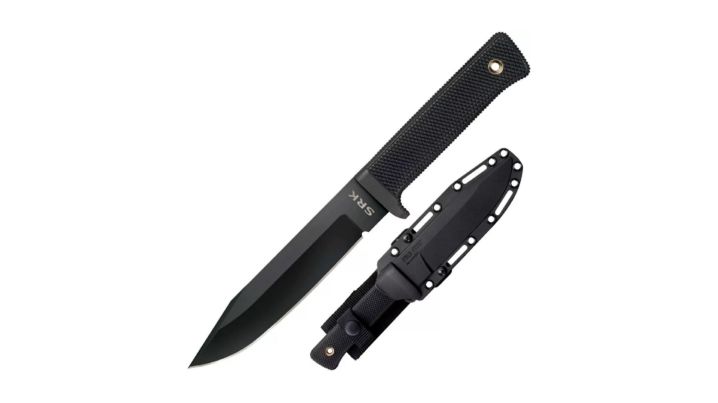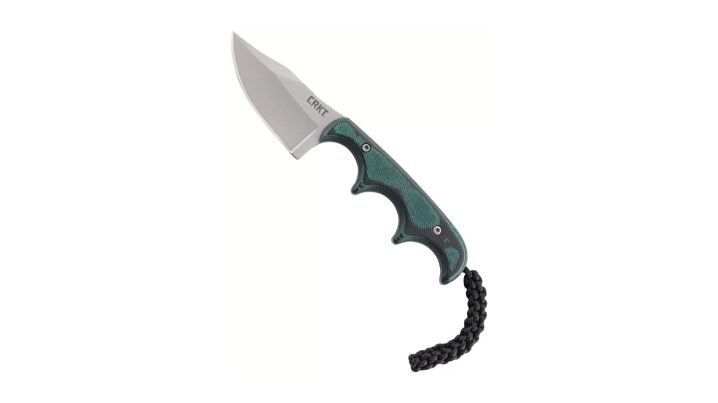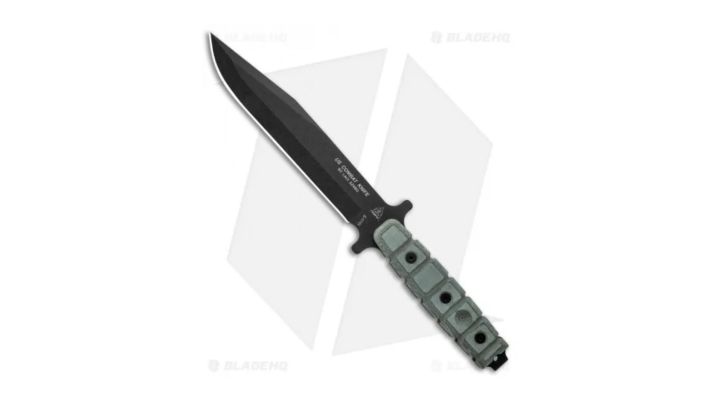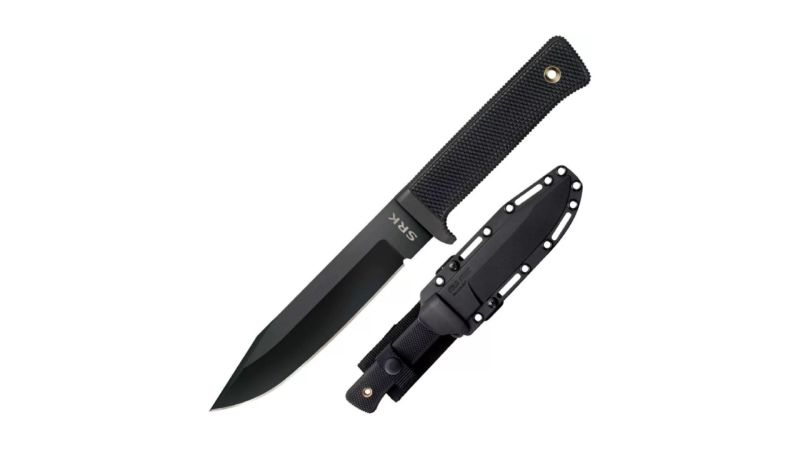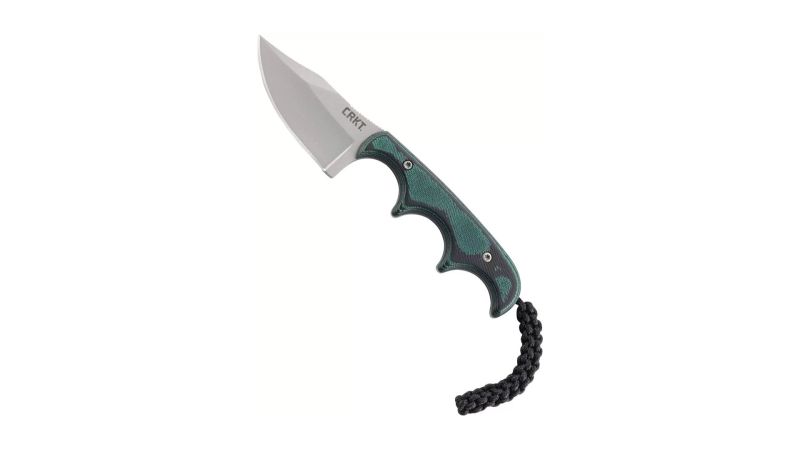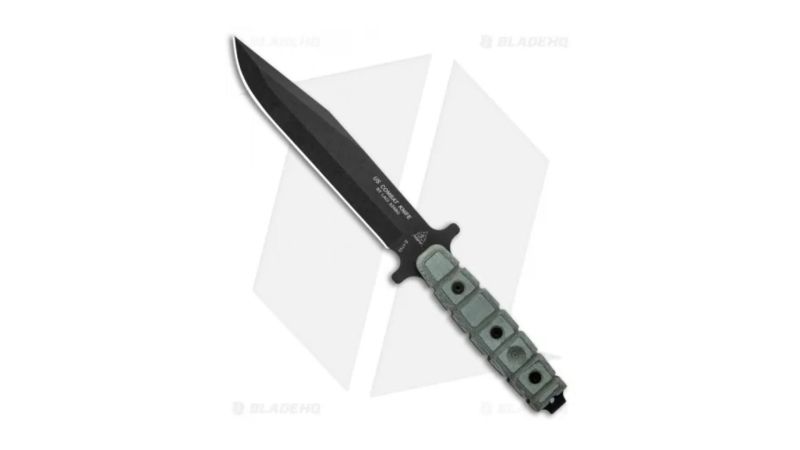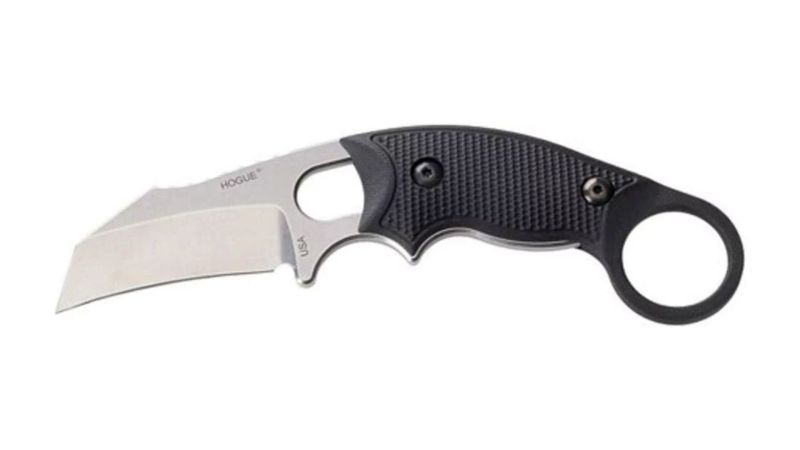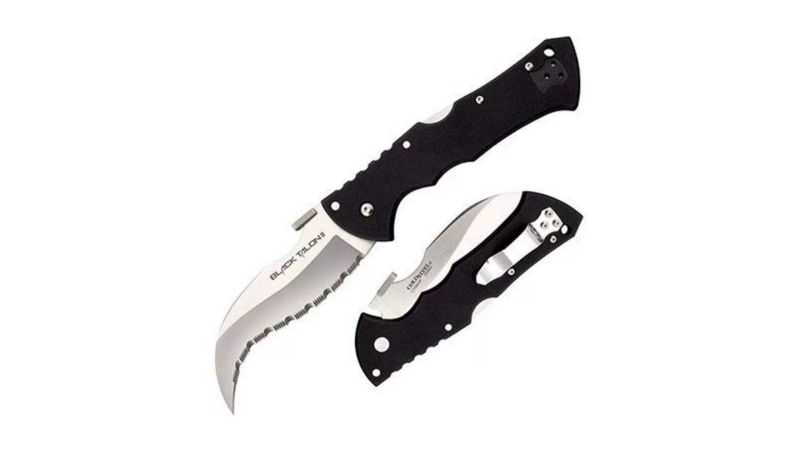We may earn revenue from the products available on this page and participate in affiliate programs.

“It did not last long. It is only in the movies that knife fighters stab and miss and slash and miss and tussle over several city blocks.”
― James Jones, ‘From Here to Eternity’
Almost every 1990s action movie has a scene where the hero (or villain) pulls out a tactical knife, a long piece of cold steel sharpened to a razor’s edge, and proceeds to go to work. While, hopefully, you don’t have any communist regimes to overthrow any time soon, maybe you’re looking for a blade to take with you when hiking or jogging, or something for self-defense? Perhaps you just need a solid fixed blade for that next field op?
Regardless of the purpose, here are our top picks for the best tactical knives worth carrying
- Best Overall: Cold Steel SRK
- Best Budget: CRKT Minimalist Bowie
- Best Fixed Blade: TOPS Knives US Combat Knife
- Best Concealed: Hogue EX-F03 Hawkbill
- Best Folding: Cold Steel Black Talon II
Best Overall
Cold Steel SRK
Best Budget
CRKT Minimalist Bowie
Best Fixed Blade
TOPS Knives US Combat Knife
Best Concealed
Hogue EX-F03 Hawkbill
Best Folding
Cold Steel Black Talon II
Things to consider before buying a tactical knife
Tactical knives come in many different forms and sizes. No matter what task you have in mind or what your local restrictions are, it’s probable that you’ll easily find a tactical knife that suits your needs. You can find them at pretty much any sporting goods store or online, and they’re available at pretty much every price point.
Types of tactical knives
Fixed blade
Any knife with a blade that is “fixed” in place — that is, one that is securely affixed to the handle and lacks a pivot — is considered a fixed blade. In many ways, they’re the polar opposite of pocket knives. Unless sheathed, the blade is always visible. Due to the lack of a complicated locking mechanism, they are straightforward, easier to manufacture than folding knives, and very user-friendly. The more resilient fixed blades are designed with a full tang, where the portion of the blade inside the handle has the same shape as the handle. Unfortunately, most inexpensive fixed blades are not; they contain a weak metal “tail” that is frequently epoxied or pinned inside the handle and are more prone to breaking.
Folding
Also known as pocket knives, folders are compact knives that contain at least one blade that folds into the handle, preventing the need for a bulky sheath. Conveniently carried in your pocket, they’re legal in most municipalities and can be extremely handy for everyday tasks. There are some that are quite large like the XL Espada from Cold Steel, but the majority will have blades between three to four inches in length. Folders are extremely versatile, despite being typically smaller and weaker than their fixed blade brethren.
Key features of tactical knives
Blade shape
The blade shape and general geometry are two of the most crucial factors to consider when selecting the appropriate blade, as they have a significant impact on the utility and longevity of your knife for particular applications. A box cutter will perform noticeably better than a machete in its intended purpose, while the machete will perform noticeably better when used outdoors. Some tasks call for a thicker, more powerful blade, while others call for a thinner, slicier blade. A knife with a very thin tip might be perfect for delicate, intricate work, but if used for cutting, will probably break.
Steel type
As many different blade shapes as there are, there are even more different kinds of blade steel available for tactical knives. Although high-carbon steel rusts more readily and is frequently less durable than premium stainless steel, it is typically tougher and easier to sharpen than stainless steel. Lower-quality steel is less expensive and usually easier to resharpen, while premium steel, whether carbon or stainless, typically has considerably higher hardness and edge retention.
Blade length
A box cutter would not be used to cut through the undergrowth, just as a sword would not be used to open an envelope. While you might want a longer blade for a tactical knife, your state, county, or city might have restrictions that limit the length of your blade. Having said that, it’s generally preferable to have a little bit more length than is required — you can do a lot with an extra inch or two.
Handle materials
Nowadays, there are a wide variety of materials that are frequently used for handles, and each one has its own distinct advantages. Despite being more easily compromised by weather and rot than modern materials, wood and leather are classic choices frequently seen on traditional blades. You’ll have a better grip with rubber handles, although different compositions may be vulnerable to UV rays or abrasion damage. Our personal favorites are G10 and micarta because of their enhanced grip in harsh environments and resilience against abrasion, chemicals, water, UV radiation, and temperature variations.
FAQs about tactical knives
You’ve got questions, Task & Purpose has answers.
Q: Where should I carry my tactical knife?
A: This depends entirely on the knife, and what your local restrictions are. Some municipalities disallow open carry, while others only allow open carry. Some limit where you can carry knives in general. As always, it’s best to be informed before you pack up to head out. KnifeUp.com is a fantastic source for up-to-date information.
Q: What type of tactical knife is best for self-defense?
A: The one you train with. No, really. As with a firearm, if you aren’t training with it, you shouldn’t be carrying it for self-defense — you’ll only be endangering yourself.
Q: What is the best length for a tactical knife?
A: Depending on your intended use, you may need a longer or a shorter blade. In general, though, you’ll want to stick with a two- to four-inch blade for concealed carry, while you can get away with longer blades when you’re open-carrying out in the field. Just make sure to check your local regulations before you do so.
Final thoughts
In general, there’s an unfortunate market for “tacticool” knives and mall-ninja blades. If something’s legitimately tactical, however, it’s also practical. Most of the blades on this list are proof of this, as they are just as handy for EDC or camping use.
Methodology
I’ve been collecting and selling knives for nearly a decade and was even a blacksmith’s apprentice for a while. I’ve also written extensively about the subject for Task & Purpose. In addition to writing guides about Damascus knives, utility knives, and karambits, I’ve also reviewed individual blades like the Cold Steel American Lawman, WE Stonefish, Leatherman Curl, Cold Steel Storm Cloud, QSP Penguin, and Spyderco Slip Stone. Bluntly put, I’m a nerd — pun intended.
For this article, we used recommendations shared in forums around the internet, particularly a handful of Facebook groups for knife enthusiasts. We relied on these sources because the members tend to provide better feedback than what you’d find in product review sections on most knife websites.
The knives we selected came highly recommended because of their overall quality and performance. We looked for blades that were durable, versatile, and easy to maintain. We considered things like the materials used for the blade, handle, and sheath, as well as the manufacturer’s reputation for quality control. We specifically looked for blades that were corrosion-resistant, either due to them being stainless steel, or having a protective coating if they were high carbon steel. Leather sheaths were avoided, as were wooden handles, due to their tendency to retain moisture.
For more information on our methodology and product reviews, check out the Task & Purpose review guidelines.
